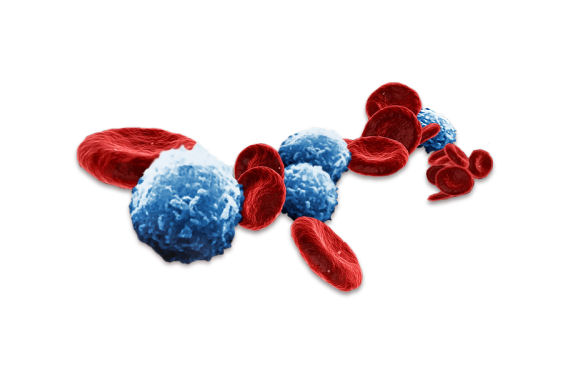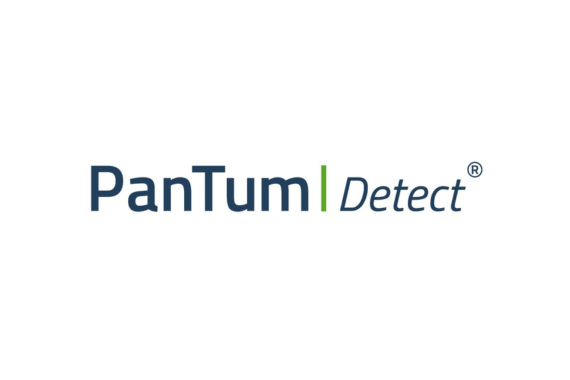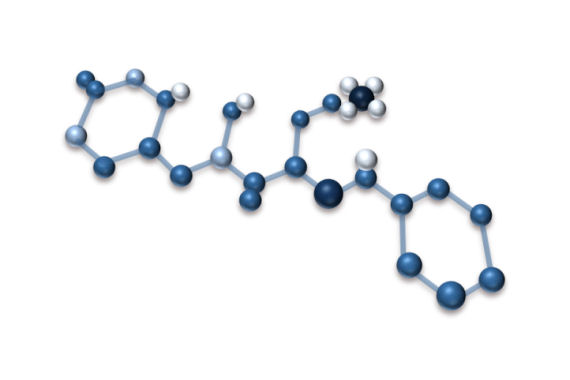EDIM TECHNOLOGY
IMMUNOLOGICAL BIOPSY USING MACROPHAGES
The EDIM technology is based on the understanding that our immune system continuously collects information that provides information about our state of health. By means of phagocytosis, scavenger cells of our innate immune system – the macrophages – take up invading microorganisms, but also dead cells. In doing so, they recognise certain structures and can trigger an immune response, for example.
So if a tumour is developing in our body, the immune system “knows” about it long before we ourselves notice it, for example through the appearance of certain symptoms.
EDIM technology makes use of this knowledge of the immune system: here, macrophages are extracted from the blood and examined for the presence of certain antigens. This is why we also refer to this procedure as an immunological biopsy. Unlike a conventional biopsy, however, it is not invasive; a blood sample is sufficient for this type of examination.
Background:
Activated macrophages have the ability to recognise, enclose and digest unwanted cell structures such as bacteria, parasites but also tumour cells. To do this, they penetrate tissue, take up unwanted cells or cell fragments there and then return to the blood. Through the decomposition of the cell material inside the macrophages, small molecular structures (epitopes) are released, which the scavenger cells incorporate into their surface membrane and thus “present” to other immune cells. On the one hand, this activates other cells of the immune system to actively fight the unwanted cells. On the other hand, these epitopes can be used diagnostically as biomarkers.
Depending on the type of cells or cell fragments phagocytised beforehand, macrophages in blood samples contain very specific epitopes, the detection of which indicates certain unwanted cells such as tumour cells.
The EDIM technology is protected by patent: EP2986985A2
(→ To the patent text)
PANTUM DETECT
BLOOD TEST FOR THE EARLY DETECTION OF TUMOURS
Based on the EDIM technology, an innovative blood test was developed that uses the markers DNaseX, or its epitope Apo10, and TKTL1 that were discovered by Johannes Coy for the early detection of tumours. The blood test provides general indications of a tumour at an early stage, which is why annual testing is recommended to detect cancers at the earliest possible stage. Almost all cancers have a better chance of being cured the earlier the disease is diagnosed. The PanTum Detect blood test provides a general indication, which in the case of an abnormal result can be confirmed by imaging procedures such as MRI or PET.
[1] https://www.researchgate.net/publication/363156969_Clinical_Study_BloodTest_Based_Targeted_Visualization_Enables_Early_Detection_of_Premalignant_and_Malignant_Tumors_in_Asymptomatic_Individuals_Citation_Journal_of_Clinical_and_Medical_Images
BENFO-OXYTHIAMINE
INHIBITOR AGAINST CHEMORESISTANT CANCER CELLS
The insights Johannes Coy has gained into the role of the TKTL1 metabolism in cancer cells are the basis for novel therapy concepts. With the help of inhibitors, it is possible to switch off the fermentation metabolism controlled by TKTL1 in cancer cells and thus force the cells to go back to combustion metabolism. This provides the basis for new therapy concepts that make it possible to combat chemoresistant cancer cells as well as cancer cells that are resistant to targeted therapies such as imatinib and sorafenib.
With the thiamine (vitamin B1) derivative benfo-oxythiamine, a first potential inhibitor of this resistance-promoting metabolism is now available.
The compound is a precursor (prodrug) of oxythiamine, which blocks thiamine-dependent enzymes such as TKTL1 and transketolase (TKT) and makes chemoresistant cancer cells sensitive to therapy again.
Benfo-oxythiamine is protected by patent:
(→ To the patent text)



